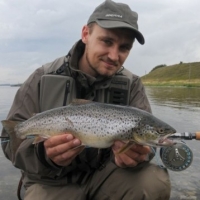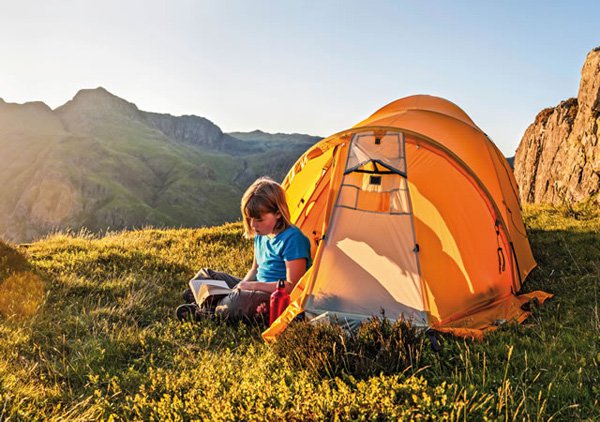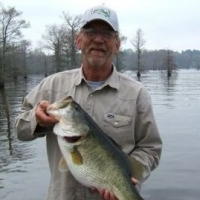fly fishing from kayks
Question
QUESTION: I am interested in learning if there are any kayaks that are designed for stability to let you stand in them when fly casting. I have tried to model how I might cast sitting in a chair, but am not too good at it and do not know how easy it would be to cast at specific targets that were at right angles to your kayak. I may just use a kayak to get to wading spots on the river I am fishing, but will pass up a number of good spots that are not wadeable. What I am looking for is the stability of a drift boat for casting and the ease of use of a kayak. Thanks for considering my question. Dave
ANSWER: This is one of the most interesting questions I have received and it really takes me back to when I first "got my feet wet" in the sport of kayak fishing.
My first experience fly fishing out of a kayak was the first time I was ever in a kayak. I decided to rent one to make sure that kayaking was compatible with casting a fly rod. I had a great time catching small "yellow bass", which are considered a trash fish here, for about 2 hours. Considering that the boat was an ancient fiberglass sit-in with no thigh braces, I was able to stay up right and even make casts at 90 degrees or more with ease.
Twelve years later, I only have two more things to add to my experience that first day. First, my boats are faster since they are well fitted and relatively narrow sea kayaks. Second, I have and will never fish without a rudder on my kayak.
The rudder has become the most important part of my fishing equipment. I value it more than my locator/gps, Werner paddle, or even anything in my tackle bags. This is for the simple fact that a rudder allows me hands free control and steering of my boat while I cast or fly cast.
The rudder will allow you to change that 90 degree cast into a 45 degree cast with the simple push of your foot. I find that I can go 10 minutes with out a single paddle stroke (while still following a shore contour) on a lake and 2-3 minutes with out a stroke on a slow flowing river or stream.
As far as standing in a kayak goes, sit-on-tops with a width of 30" or greater are commonly used for this, but fast sea kayaks are not really capable of supporting a standing angler. If there is someone out there who does it, I would have a hard time believing that they can set the hook on a 10lb fish at 90 degrees to the boat while standing. Where as I could set the hook on a freight train in a well fitted sea kayak at 90 degrees while sitting. The difference is that you are "locked in" with your thigh braces which is kind of like wearing a shoe for your lower half.
Standing is also detrimental to the inherent stealthiness of a kayak, sit-in or sit-on-top. With being low to the water, you will be surprised to see how many fish you catch near the boat even in high pressured "in town" lakes. The only place I would even consider standing would be sight fishing on salt water flats. If that is your game, then wading while towing your boat behind you is your best bet.
---------- FOLLOW-UP ----------
QUESTION: Your reply really helped me and your shared experience is one that let's me know that others can really help me understand the nature of how kayak fishing can be done.
I have one follow-up question since some of the water I hope to fish will be a moving stream. If I am anchored at a fishing hole that I want to work for five to ten minutes, in a stream with moderate flow, am I correct in assuming that the bow anchor is the one I would set an then use the stearing rudder to angle the kayak toward either shore. Would this be safer than trying to set both a bow anchor and a stern anchor?
Answer
I have to admit that I am probably not the one to answer this question for you. My only experience with anchoring a kayak was back in 98 when I was first fishing out of one. I tried "anchored" fishing a few times with some success, but I really began leaning toward giving up on the hassle of an anchor and just fishing. To put it plainly, I really am no expert on "anchored" kayak fishing.
As a beginner trying to figure things out for myself, I purchased a "Cheyne" anchor for my first try. This anchor is a light weight and was touted as 100% retrievable in all conditions. It did work as advertised and I still have it to this day. As you suggested, I did set a bow anchor and used the rudder to swing back and forth between shores. This really works on a lake in 10-15mph winds that induce a surface current.
On a stream it is a little more touchy in that turbulent water, even in a small slow flowing stream is typically going every which way, not just down stream (though it all averages down stream). Thus I found that it was difficult to run an anchor on a stream, and I rarely had the need to run one.
During the anchoring experiment stage, I quickly found that my kayak had enough momentum to throw 4-6 casts (medium retrieve) with out really loosing ground and falling downstream. And this was with out even putting the anchor out! It's a strange feeling since you see the water go past you but you stay in the same place as related to the shore. This happens for 2 reasons. First, though you are not moving, you still have momentum as related to the flow of the current. With a narrow boat, the drag is so minimal that your momentum keeps you in the same place for a long time. Second, retrieving a heavy pull lure in front of your boat such as a large spinner or crank bait, will actually pull you up stream in some cases. This only works if you have a rudder to keep you pointed directly up stream. If you had no rudder, you would quickly turn sideways and go whizzing off down stream.
In calm/flat water, I often use the pull of a buzz bait or spinner bait to pull my self along the shore while parallel casting for largemouth bass.
On most streams that I find too turbulent to use the above method, I will just back into shore and use the ground as my anchor. My favorite method for this is to get into a back flow along shore and then back up and beach. I usually have my best fishing on back flows.
As a last word of note I will let you in on my rudder preference. I really like a "High mounted" rudder. The "Smart track" rudders that sit below the deck line while retracted are obviously at risk of damage when using my "backing into shore" method. Feather crafts are much safer to use in this situation. They also look better, at least in my opinion.
trolling with mono
edgar sealey & sons LTD. reel


